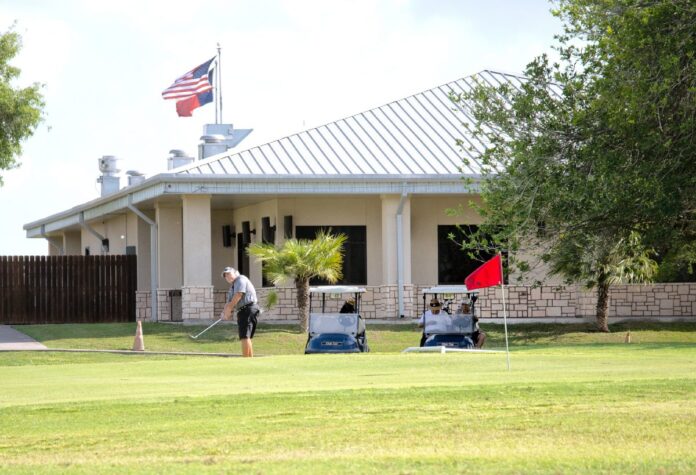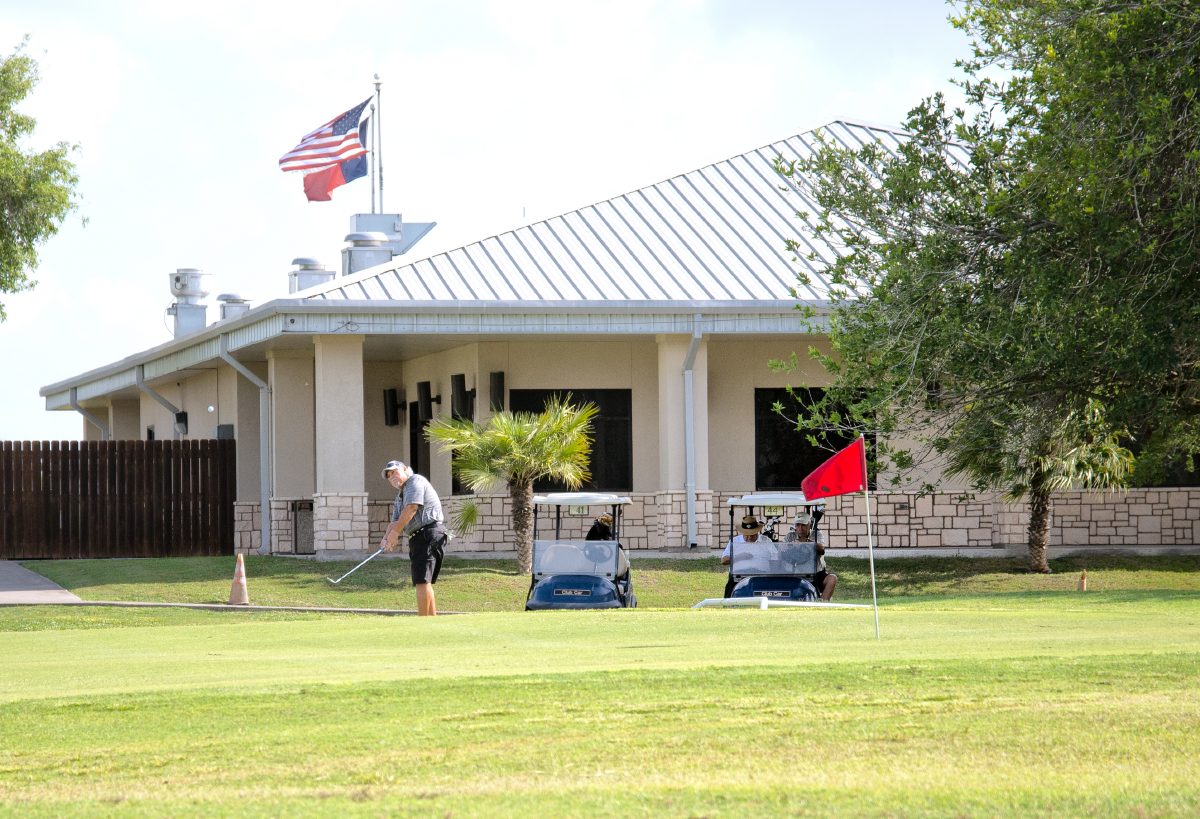By RICK KELLEY
Staff Writer
HARLINGEN — A study of the operations and facilities at city-owned Tony Butler Golf Course finds the course in poor condition and in need of millions of dollars of new investment.
Even then, the municipal course will likely operate in the red.
“It’s been a good process for us although some of the findings are a tough pill to swallow,” Ed Getherall, director of consulting for National Golf Foundation Consulting Inc., told city commissioners last week.
“I also think some of them are not surprising based on some previous numbers that have been produced in terms of what it’s going to take to get the golf course in shape.”
Tony Butler has lost around $1 million over the past five years and is on track to lose at least $500,000 a year without any changes in how it operates. And while the city’s municipal golf course isn’t alone nationally in its financial troubles, fixing the problems could cost taxpayers here between $3.7 million and $7 million and lead to increases in fees for players.
The city paid the NGFC $22,000 for the study of its Tony Butler course. The NGFC is a non-profit organization which Getherall said has done about 300 similar studies for cities across the country.
Many of the problems facing municipal-owned golf courses in Texas and the rest of the country are not unique. Years of infrastructure and facilities neglect, as well as the inability to compete with privately-owned courses, are problems everywhere.
Unless city officials can negotiate a public-private partnership, the solution is the same, too — millions of dollars in taxpayer funds to bring these courses to break-even, let alone turn a profit.
Losing the least money
The NGFC study lists three scenarios for Tony Butler, a course its experts describe as “poor,” with problems ranging from turf loss on too small greens, concrete-like bunkers and drainage and irrigation problems which have been addressed over the years with “Band-Aid repairs.”
The first recommendation is the least expensive but also produces the fewest desirable results.
It would keep the course “as is,” and continue its “triage” approach to facility maintenance with no capital improvements. The current annual operating deficit projected at $526,000 would continue, and likely increase.
The second is infrastructure-only improvements which would entail a $3.7 million investment. Under this plan, the course would lose an estimated $227,000 annually once repairs are completed.
The third, and most comprehensive, is a scenario which the study says would be a “transformative renovation” at a cost of $7 million. After this is completed, estimates are the course would almost break even, losing just $16,000 a year.
“If we raise the $3.7 million for the improvements, even if those funds were raised somehow by a non-profit, we would still be incurring $227,000 losses a year projected, right?” asked City Manager Dan Serna.
“That’s the way the math worked out with fairly nominal increases in fees,” Getherall responded.
City not alone
Getherall stressed that problems at Tony Butler are shared by other city-owned courses nationwide.
Half of these municipal courses lose money, he said.
“I don’t know if more municipal courses are losing money or if it’s just become more political because a lot of cities are running out of land and they have other budget considerations,” Getherall said. “It seems like municipal golf is coming to the forefront. It’s a lot in the news lately. The City of Louisville, the City of Seattle are considering closing courses and others already have.”
Part of the reason for these decisions is fewer people are playing golf due to a number of factors, such as the expense, time constraints or other sports activity and entertainment options.
“Golf is not dying, golf is still a very robust sport,” Getherall said. “But we’ve seen some attrition among infrequent golfers whereas avid golfers have basically stayed the same.
“The number of young adults — well, millenials get blamed for everything, and so we blame millenials for some of this, too — they’re not playing at the rate prior generations of their age group played golf,” he added.
The National Golf Foundation says U.S. golfer numbers peaked in 2005 at about 30 million and have since dropped to about 24 million, although the group says things have stabilized over the past five years.
Yet the diminishing number of total golfers has had an impact on golf courses, which Getherall admits have been overbuilt.
“We’re closing 150 golf courses a year over the last decade-plus,” he said. “We see this as a correction in supply. It was greatly overbuilt and now it’s making its way back toward equilibrium.”
Trouble with fees
Tony Butler GC was making money as recently as 2012, but Getherall said very little of those profits were re-invested.
One of the issues contributing to Tony Butler’s financial problems has been the question of what to charge a golfer to play a round, known as a green fee.
Privately-owned golf clubs in the area — most of which allow non-member golfers to play — have been aggressively discounting rounds which the city-owned course has found difficult to match, since the rates it can charge are set by the Harlingen City Commission.
Tony Butler charges $17 for 18 holes ($28 with cart), but charges just $20 for 18 holes and a cart during “twilight times” of after 3 p.m. To play nine holes, the cost is $14 ($21 with cart).
The highest green fees in the Valley occur at South Padre Island Golf Club at about $45 per 18 holes.
“Are there municipalities faced with the same dilemma we have and they then just adopt an ordinance with 50 different rates on it for all those scenarios and that way they’re covered?” asked Commissioner Victor Leal.
“This is our world,” Getherall answered. “We look through these permutations all the time. You might have 20 specials, six different senior rates, six different junior rates, four ‘time’ rates during the day, four seasons, 18-hole versus nine-hole, so it’s not unusual even within the ordinance to have that many rates. … What I’m talking about is a little more nimble field management.”
Some would pay more
There are positives about the city’s facility, which offers an 18-hole and a nine-hole course, including a dedicated core group of players who play regularly.
An online study conducted using responses from Tony Butler users was revealing.
Twenty-five percent of almost 300 respondents said they would not be willing to pay higher green fees to help defray capital investment to make the course better.
Another 29 percent said they would be willing to pay $2 to $3 more to play 18 holes. Twenty percent would be willing to pay $4 to $5 extra, 7 percent would pay $6 to $8 more and 18 percent said they would pay whatever is required.
“I’m sure they mean ‘within reason’ on that,” Getherall said of the latter.
He said golfers who play Tony Butler regularly were generally very critical of the condition of the course, particularly the greens, which Getherall said were too small and outdated.
“Customer service was strong, a convenient location, people liked the layout of the golf course, they liked the layout and the affordability and tee time availability,” he said. “But it all ties back to the condition.”
The Harlingen City Commission took no action on the Tony Butler Golf Course study at the meeting last week, but Mayor Chris Boswell did suggest an advisory committee be formed to further assess the study and how the city should respond.







